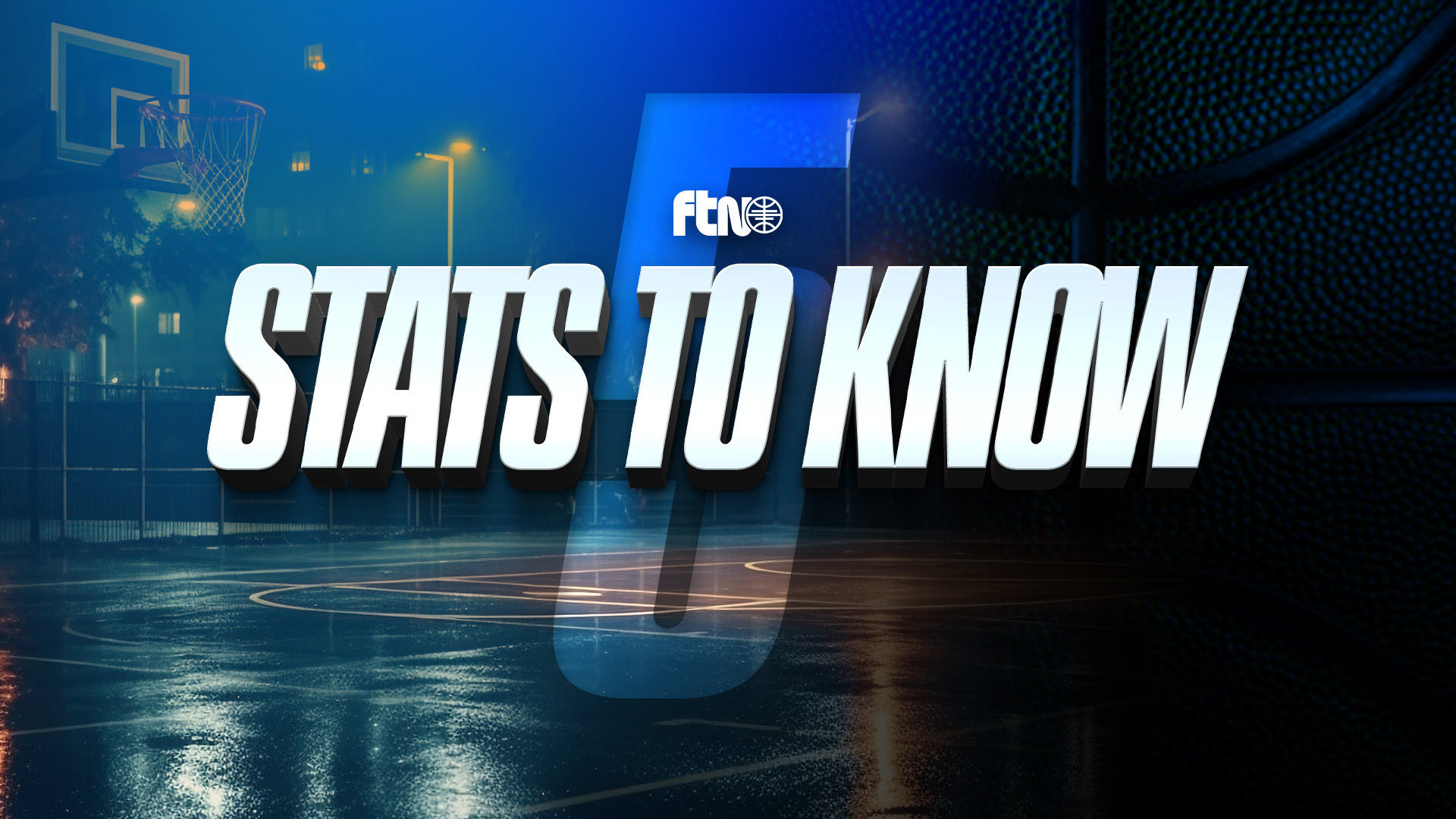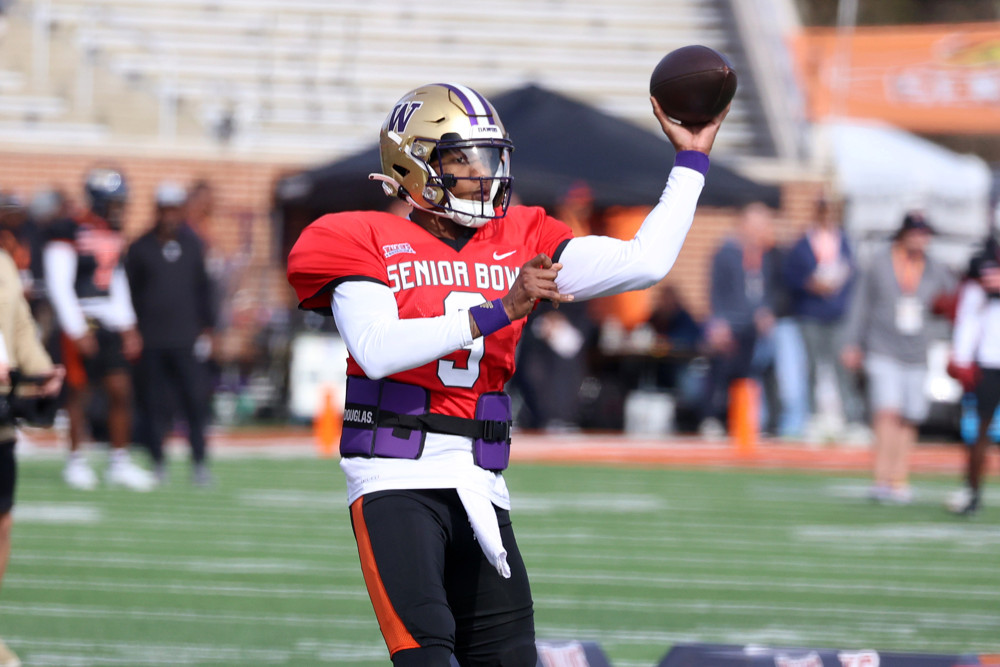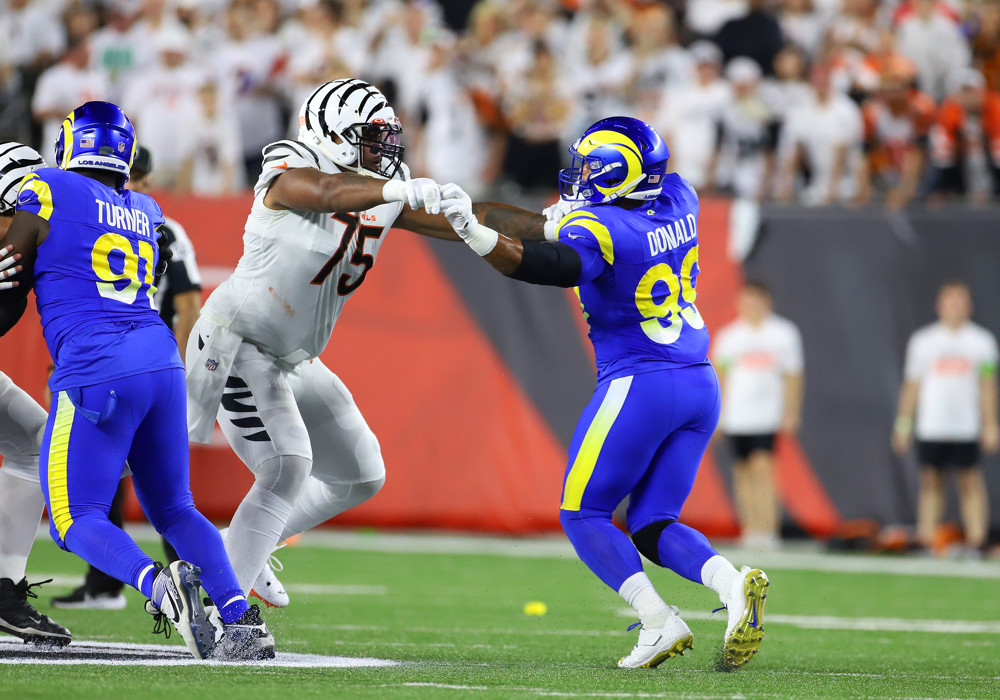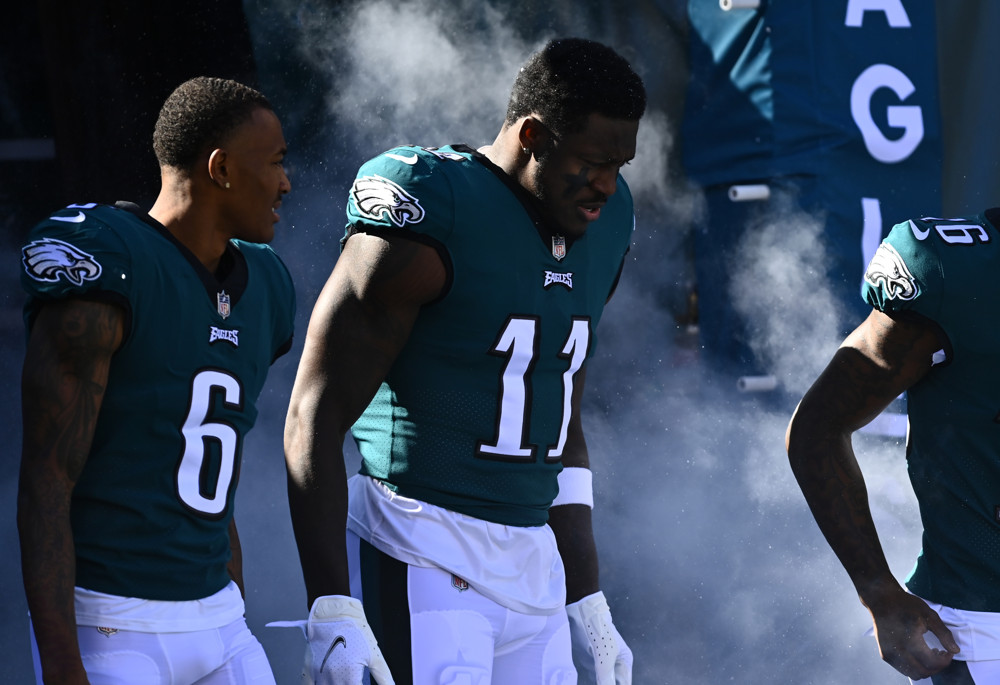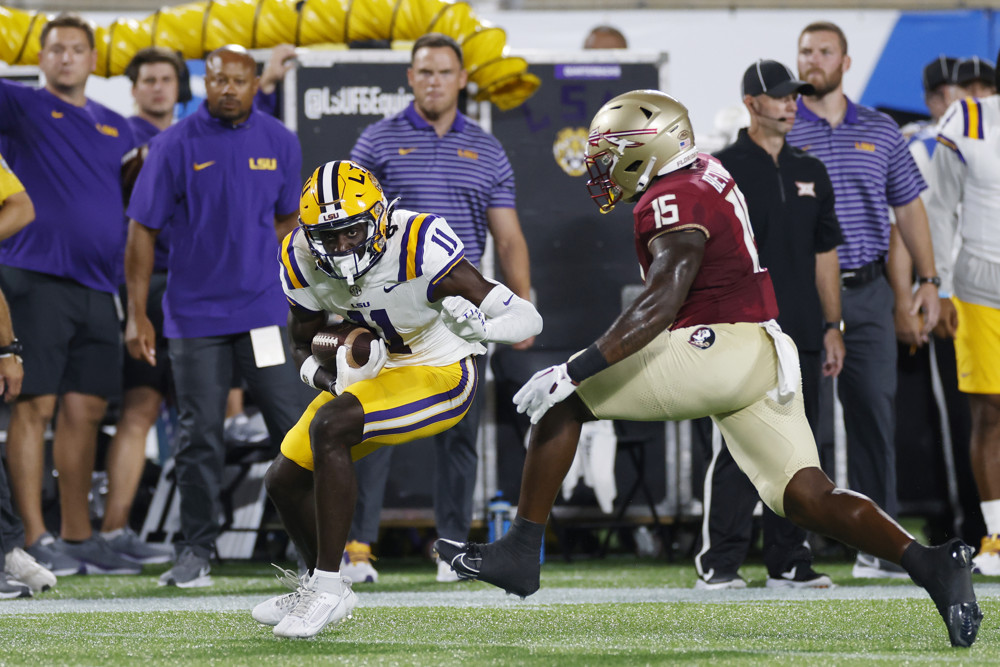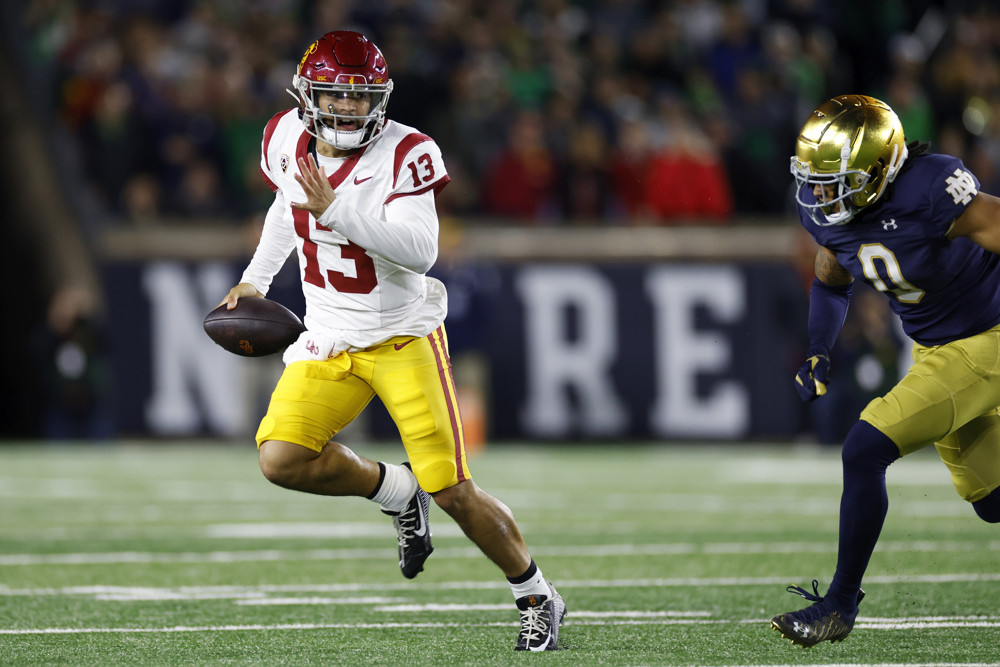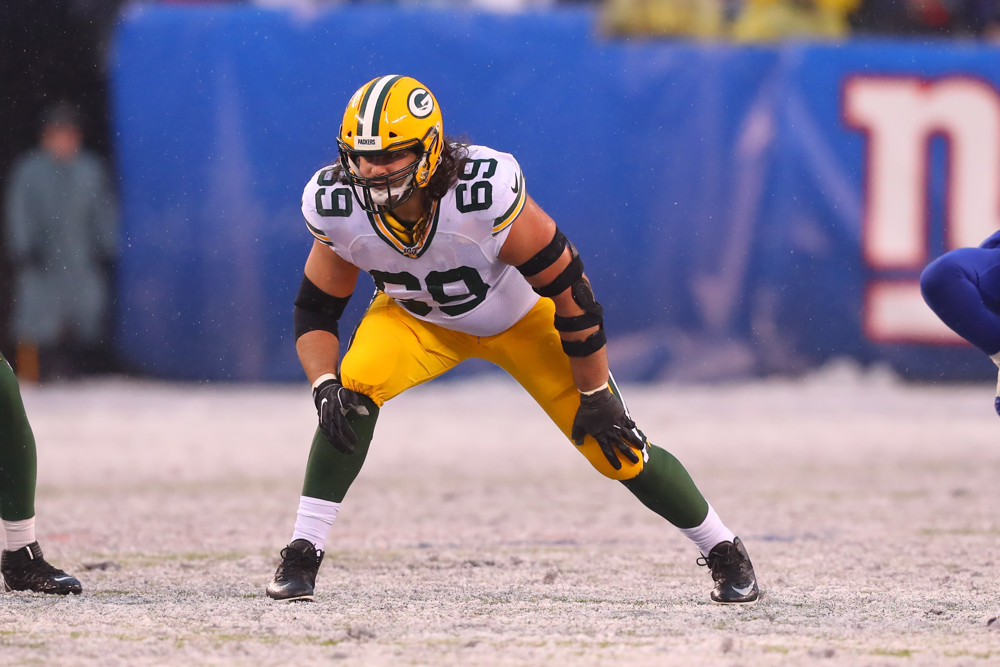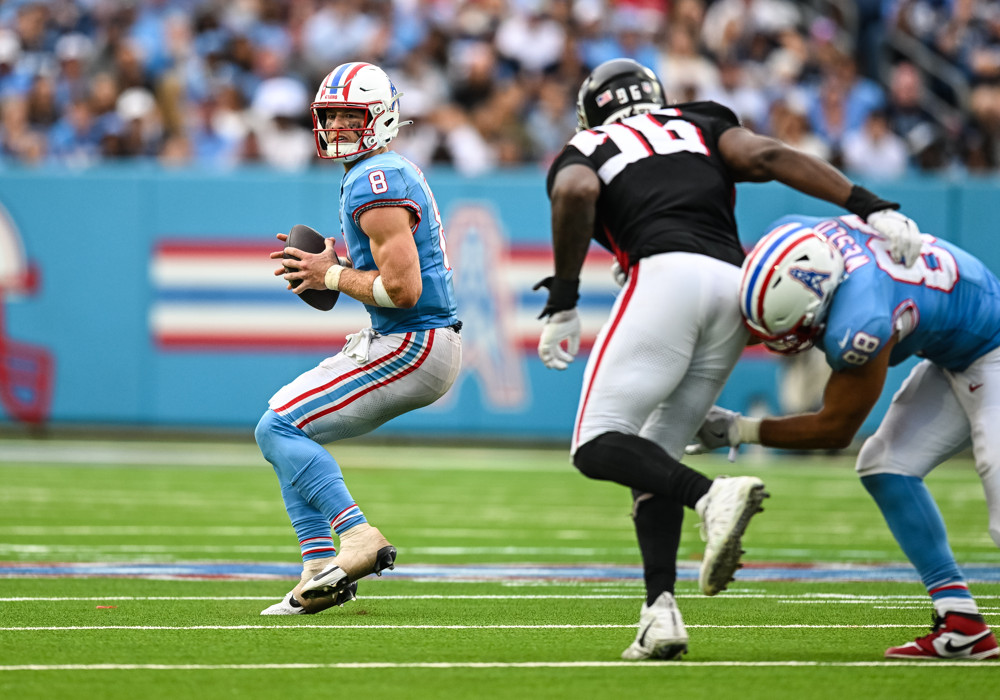
The 2024 NFL Draft is in a few days, and soon after the fantasy season will be underway. The 2024 class is seen as one that has plenty of potential impact players at several positions, including quarterback, wide receiver and offensive line. After months of studying the tape and production profiles, we will soon have clarity on how the NFL views many of these players.
Still, there are plenty of dynasty and best-ball leagues that have been drafting rookies for months. While draft capital is a major data point we need in fantasy, there are still several players who can be identified by their college production and pre-draft process as immediate impact players the second they are drafted to a team.
This article will look at players who can have an immediate impact in fantasy football, regardless of their landing spot. Check out the top players below and be sure to check out FTN’s excellent rookie scouting guide for more information on these prospects, as well as many others.
Quarterback
Caleb Williams, USC
By all accounts, Caleb Williams to the Chicago Bears is a foregone conclusion. Williams will enter the NFL in one of the best “first overall pick” situations that we have ever seen, with a solid offensive line, two excellent pass-catchers in DJ Moore and Keenan Allen, two pass-catching tight ends (Cole Kmet and Gerald Everett) and a deep backfield.
Williams should have no problem making an immediate impact given his arm strength, creativity in the pocket and ability to generate big plays. The 2022 Heisman winner threw for 10,082 yards and 93 touchdowns with just 14 interceptions in three college seasons. He could easily post a QB1 season as a rookie and can justifiably be the first rookie quarterback drafted in fantasy this offseason.
Jayden Daniels, LSU
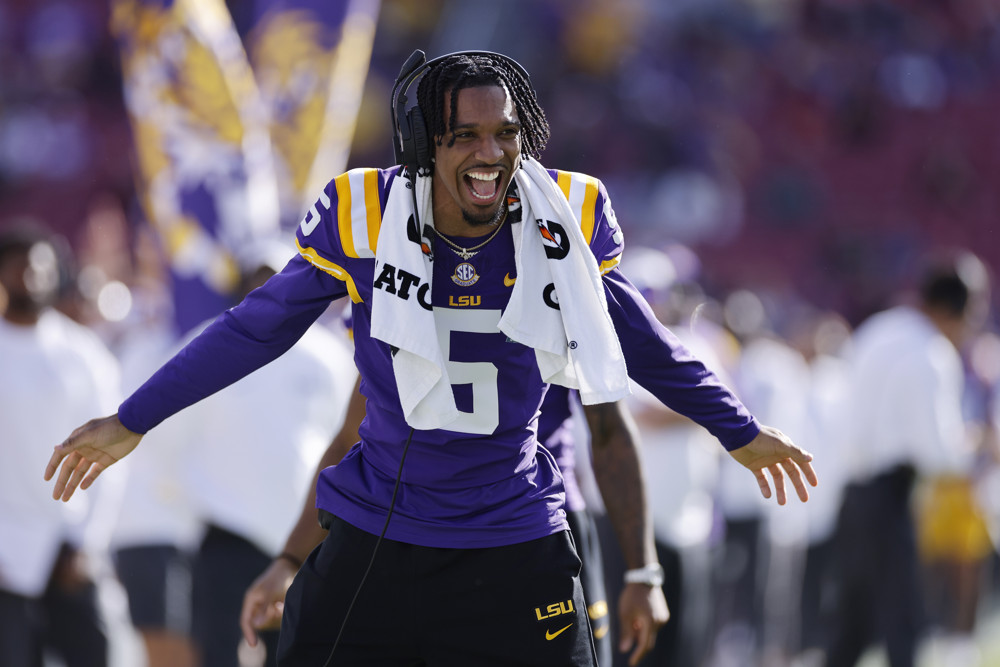
The safest bet for second player off the board has changed a lot this offseason. Most recently, it seemed like Daniels had settled into the most likely selection. However, in the week leading up to the draft, there seem to be some questions about whether the 2023 Heisman winner will land in Washington.
Regardless of landing spot, Daniels should have an immediate impact in the fantasy space (yes, even if it’s the New England Patriots). Daniels took full advantage of his fifth season in college, throwing for 3,812 yards and 40 touchdowns with just four interceptions with LSU. More importantly, Daniels will provide immediate fantasy value thanks to his explosiveness as a runner.
Daniels posted three straight seasons with over 700 rushing yards and at least six touchdowns. His rushing prowess was most on display during his final season in the SEC, where he posted 1,134 rushing yards (8.4 yards per carry) and scored 10 rushing touchdowns. Daniels is a dynamic runner, which is a skill that typically results in fantasy success.
Ideally, Daniels will land in an offense that has pass-catchers and a creative play-caller who can leverage his strength as a runner. But even if that doesn’t happen, Daniels should have upside as a dual-threat quarterback who can sustain his fantasy production on the ground.
Running Back
Trey Benson, Florida State
Many hoped that Benson would take a significant step in 2023 and take control of the “rookie RB1” race heading into the draft process. Unfortunately, that didn’t happen. Benson handled as many carries in 2023 (156) as he did in 2022 (154) but saw his yardage (906 vs. 990) and yards per carry (5.8 vs. 6.4) take a hit on an undefeated Florida State team. As a plus, he significantly increased his touchdowns (14 vs. 9). Benson also posted solid, but unremarkable receiving numbers in his final collegiate season (20 receptions for 227 yards and a touchdown).
Despite the underwhelming production, Benson may have found a way to entrench himself as the RB1 in the class due to a stellar combine performance. Benson weighed in at six feet and 216 pounds before posting a 4.39 40-yard dash. Benson offers a unique blend of size, speed and age (21.7 years old) that few other backs in this class can offer.
Landing spot will matter for Benson, but he seems most likely to find himself in an advantageous position as a back who can offer three-down upside. Assuming he lands on a team with a thin running back depth chart (looking at you Dallas or the Giants), Benson may be one of a handful of running backs who can provide instant fantasy production.
Blake Corum, Michigan
Blake Corum decided to enter the NFL draft after functioning as the focal point of the Michigan offense over the last two seasons. Corum had two straight seasons with at least 247 rushing attempts, 1,200 rushing yards and 18 rushing touchdowns (including a huge 27-touchdown performance in 2023). Corum showed very little receiving production during his career, which isn’t shocking given Michigan’s offense.
Corum’s size was pretty underwhelming at the combine (5-foot-8, 205 pounds), but his 40-yard dash (4.53) was adequate to play at the NFL level. Corum needs to land in a north/south running scheme (or an inside zone heavy offense) to truly hit his upside but has shown the ability to handle a solid workload and should be an early-down running back with touchdown upside in the red zone.
Braelon Allen, Wisconsin
Like Blake Corum, Braelon Allen enters the 2024 draft class as a north/south runner with big upside in the red zone. During his three seasons with the Badgers, Allen handled at least 181 carries and posted at least 984 rushing yards and 11 touchdowns. He had a solid year as a pass-catcher in his final season (28 receptions for 132 yards) but is hardly a receiving threat. Allen has the bonus of entering his rookie season at just 20 years old.
Allen didn’t do himself any favors in the pre-draft process. He declined athletic testing and instead just did positional drills. Still, he has the track record of a power runner who has the size to handle the workload in the backfield. At best, he will find himself with a team that will hand him the keys to the early downs in their backfield. At worst, he has massive upside as a goal-line back who can score double-digit touchdowns in his first season.
Wide Receiver
Marvin Harrison Jr., Ohio State
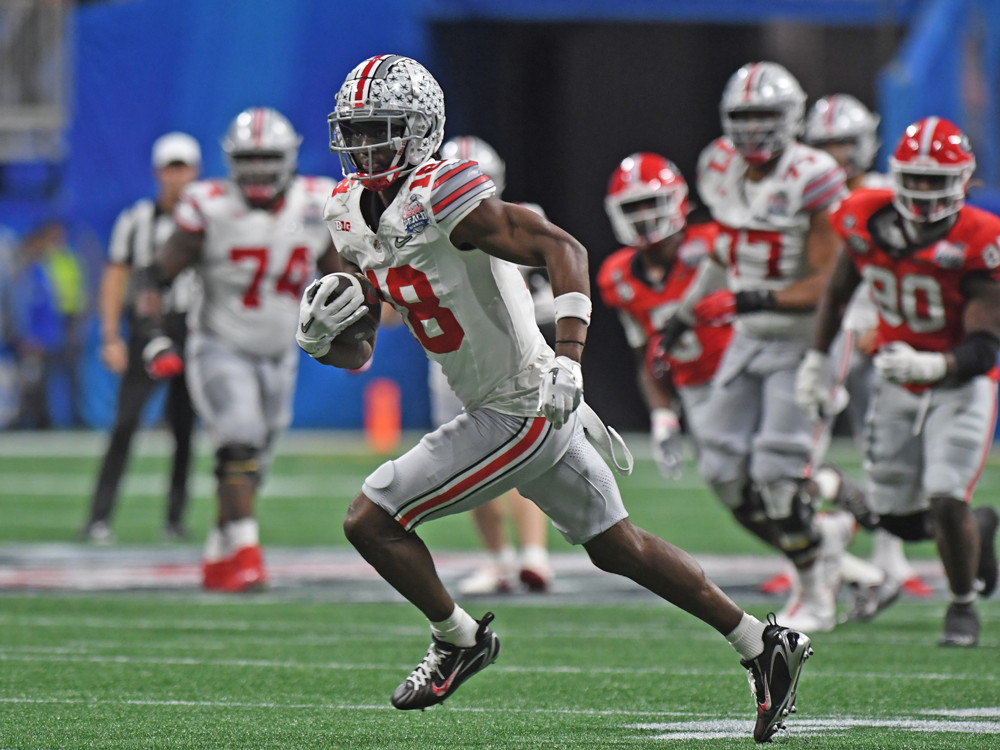
Marvin Harrison Jr. opted to rest on his laurels as one of the best receivers in football during the pre-draft process, working on his craft instead of providing any testing data (he did measure in at the combine) and voluntarily making himself a “black box prospect.” While that isn’t ideal for fantasy, it is telling that teams felt comfortable enough with him as a top prospect to allow him to pass on any athletic testing.
Even without any testing data, it is hard to argue against Harrison being one of the most complete wide receiver prospects we have seen enter the draft in many years. Harrison had back-to-back seasons with at least 67 receptions, 1,200 receiving yards and 14 touchdowns. That production is even more impressive when you realize that he provided similar production with 2023 first-round pick C.J. Stroud and recent Ohio State transfer Kyle McCord.
Harrison is widely regarded as a “can’t miss” prospect, and while we have seen many of them miss, few receivers have his unique blend of size, route running and ability to win contested-catch situations. He didn’t have much YAC ability with Ohio State, but that is a small nitpick for a player who will undoubtedly produce regardless of his landing spot.
Malik Nabers, LSU
If Marvin Harrison Jr. isn’t the top wide receiver in the draft, then his primary competition will certainly be LSU’s Malik Nabers. Nabers had solid production as a true freshman in 2021 (28 receptions for 417 yards and four touchdowns) before seeing his production explode with Jayden Daniels in Baton Rouge. Nabers had consecutive seasons with at least 70 receptions and 1,000 yards but took his game to another level in 2023. The receiver finished with 89 receptions for 1,569 yards and 14 scores.
Unlike Harrison, Nabers elected to participate in the testing process. He weighed in at a solid six feet and 200 pounds and ran a 4.40 40-yard dash at his pro day. Nabers is a true WR1 who has some of the best explosive speed in the class. Nabers is in the conversation for the WR1 in the class and will undoubtedly be a top-10 pick. It seems very likely that he will immediately emerge as his team’s WR1 and has the tape and testing to make an impact as a receiver who can take any reception to the house in the NFL.
Rome Odunze, Washington
The last of the big three receivers, Rome Odunze would probably be considered the top receiver in most rookie classes. Odunze cemented himself in the top three of this class by taking part in the NFL combine (unlike Harrison Jr. and Nabers), weighing in at 6-foot-3 and 212 pounds and posting an excellent 4.45 40-yard dash.
Not only was Odunze extremely impressive in his testing, but he also had one of the best production profiles during his last two seasons at the University of Washington. In 27 games, Odunze produced 167 receptions, 2,785 receiving yards and 20 touchdowns. During his four seasons with Washington, Odunze averaged 15.3 yards per reception.
Like Harrison and Nabers, it seems very unlikely that Odunze falls outside of the top 10 in the NFL draft. He offers the same size as Harrison and has the verified testing speed in the same class as Nabers. Odunze also could be the most complete receiver in this class despite his status as the third option for most teams. Odunze played primarily on the outside (unlike Nabers at LSU) and flashed the ability to generate yards after the catch (unlike Harrison).
For many, Odunze is viewed as the “safest prospect” at wide receiver given his collegiate production, testing numbers and positive reviews in interviews. Like the other receivers, Odunze should have no problem establishing himself as a top option in whatever offense he lands in, giving him immediate fantasy upside.
Brian Thomas Jr., LSU
After two quiet seasons at LSU, Brian Thomas Jr. exploded onto the scene in 2023. The third-year receiver formed an excellent complement to Nabers’ explosive production, amassing 68 receptions for 1,177 yards and 17 touchdowns in 13 games. Unlike Nabers, Thomas has the size (6-foot-3, 209 pounds) and speed (4.33 40-yard dash at the combine) to consistently play on the outside at the NFL level.
Thomas still needs to grow as a route-runner at the NFL level but will be a safe bet to immediately produce as a down-the-field threat who is excellent at commanding targets in the red zone. Unlike the top three receivers, the LSU product is frequently mocked in the mid-to-late portion of the first round, which gives him the ability to play with better quarterbacks in higher-quality offenses. He may not have the benefit of stepping into a situation as a team’s top receiver, but being a secondary option in a better offense is not a bad thing.
Of the “tier two” receivers in the class, Thomas seems like the one who has the best combination of tools to be successful at the NFL level. He can post up as a big target in the red zone while also flashing the speed to make explosive plays down the field. Thomas is very similar to another size/speed producer in Green Bay, Christian Watson. If Thomas can be a healthier version of Watson, then he should have no problem producing for fantasy managers as soon as 2024.
Tight End
Brock Bowers, Georgia
Historically, the tight end position takes time to produce at the NFL level. This tight-end class is also massively disappointing after last year’s stellar class. However, there is one player who stands out in the 2024 class and should have no problem producing early: Georgia’s Brock Bowers.
Bowers stepped foot on Georgia’s campus in 2021 and immediately became the leading receiver for the Bulldogs, a spot that he didn’t relinquish in any of his three collegiate seasons. During his time in Georgia, Bowers posted three consecutive seasons with at least 56 receptions, 700 receiving yards and six touchdowns. He was poised to set career-highs in all three receiving marks in 2023 before an ankle injury limited him to just 10 games. Even then, Bowers fought his way back in time to contribute to Georgia’s second consecutive national championship.
The pre-draft process confirmed that Bowers has the necessary size (6-foot-3, 243 pounds) and speed (reported 4.53 40-yard dash at his pro day event) to make an immediate impact at the NFL level. His film is littered with him taking snaps all over the formation (even in the backfield) and outrunning SEC defensive backs to the end zone.
Last year, we were spoiled by solid rookie tight end seasons from Sam LaPorta and Dalton Kincaid. However, neither player was as safe a prospect as Bowers. The former Georgia Bulldog is seen as a potential top-10 selection in the NFL draft and, in the hands of a creative offensive coordinator, should provide fantasy value the minute he steps on an NFL field.













